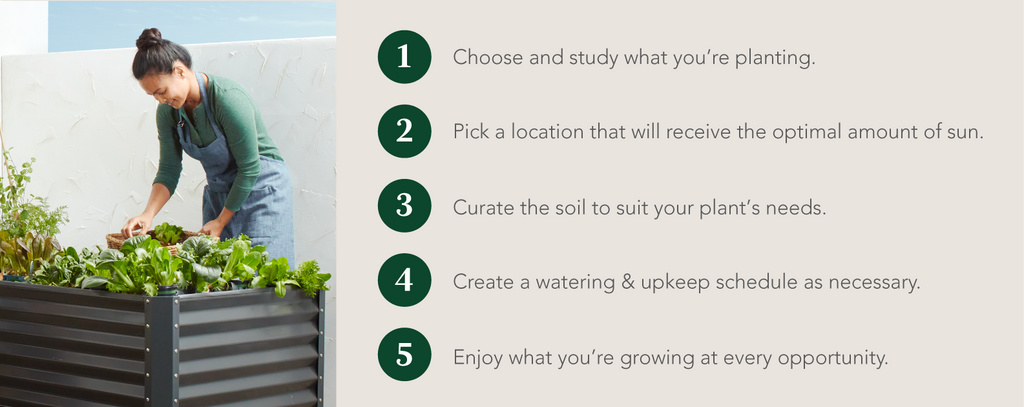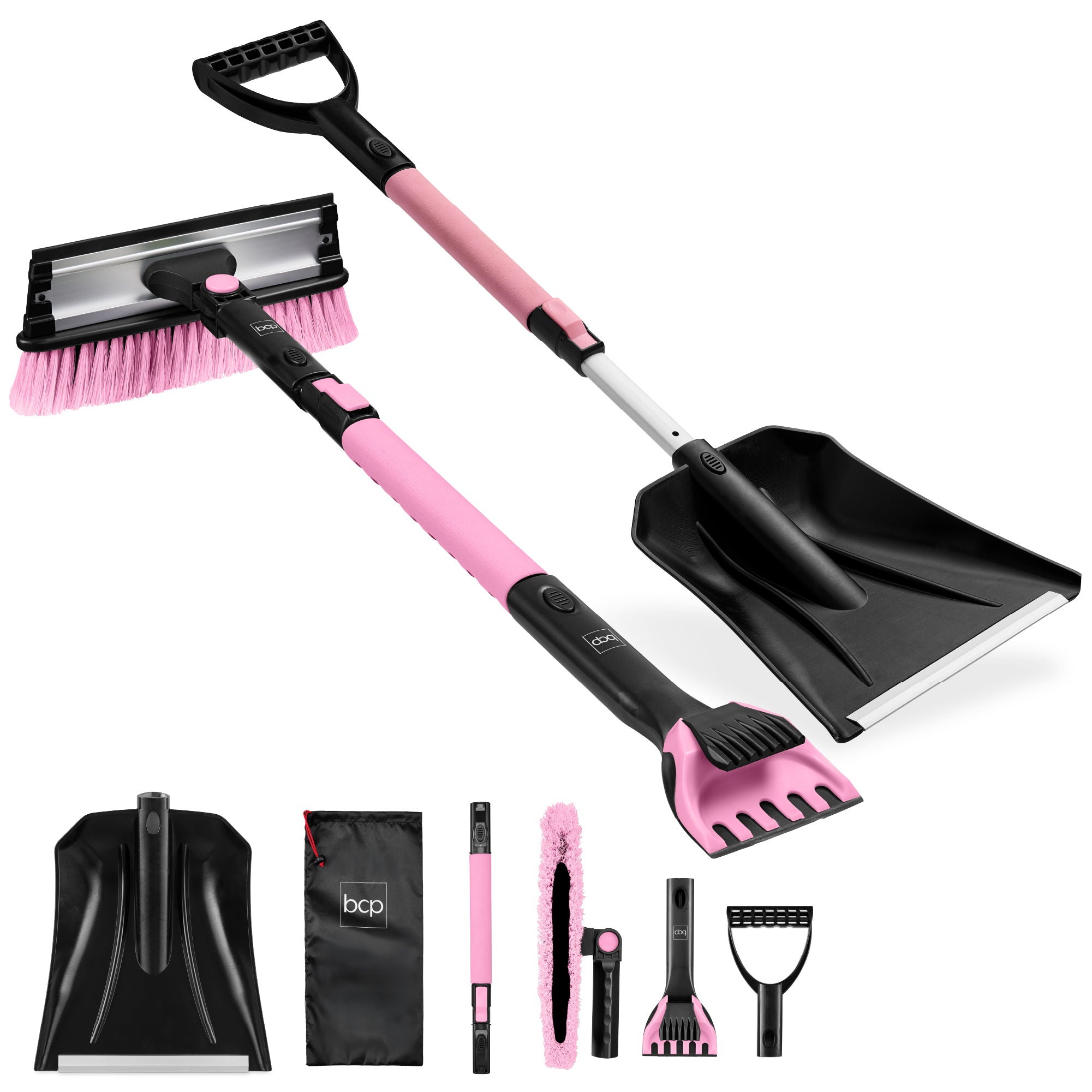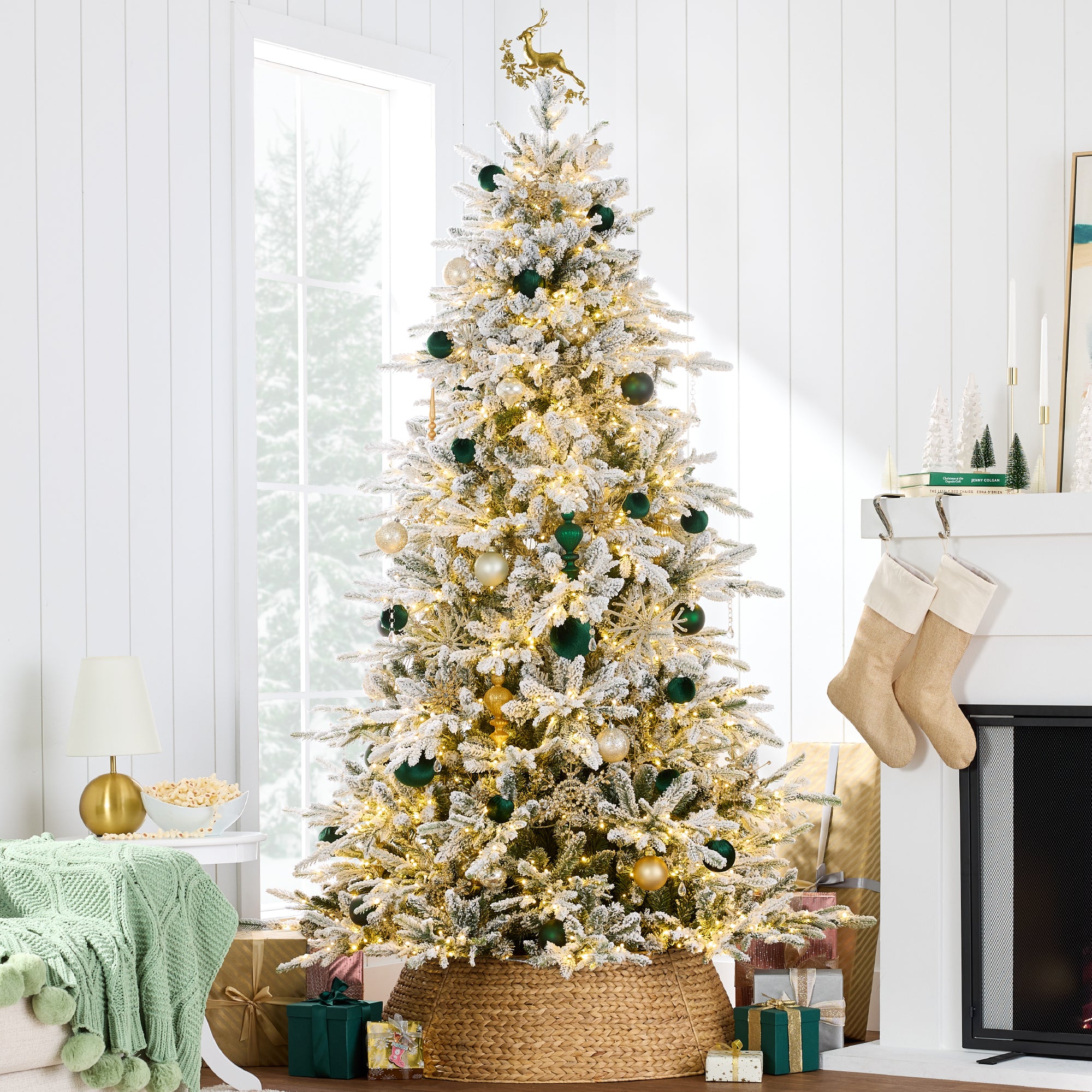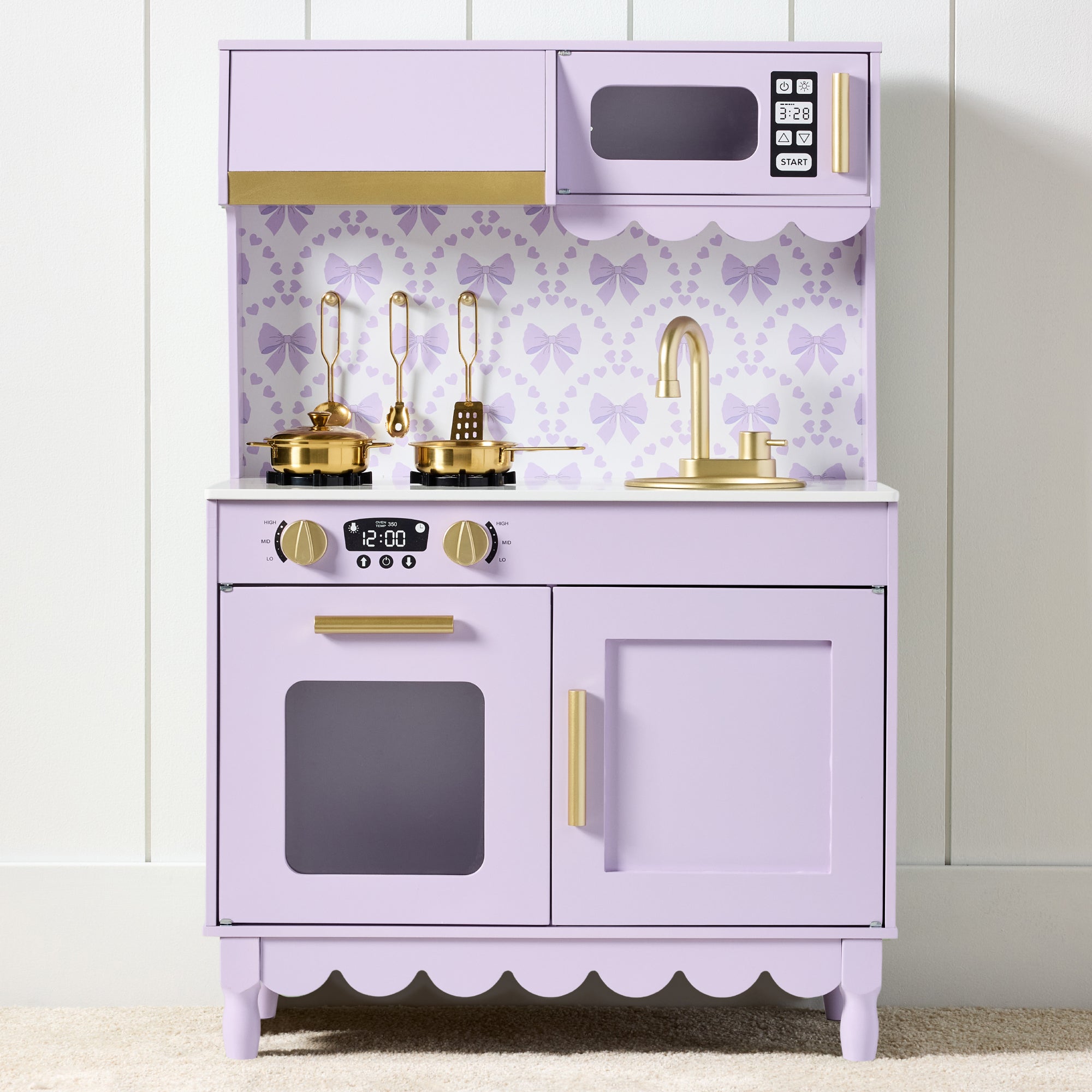As more and more of us adjust and develop a more home-centric lifestyle, one should never underestimate the rich rewards that come with tending and growing your own garden. Aside from the literal fruits [and vegetables] of your labors, there are many benefits, emotional and physical, enjoyed by the home-gardener:


For those new to flexing their green thumbs, there’s no better space than a garden bed to get started. Fewer weeds, reliable drainage, and less soil erosion are a few well-known benefits to garden beds, but in general, garden beds serve two purposes: they create an isolated enclosure for specific plants, and they maximize small spaces.
Let’s start with the enclosure; it’s common knowledge that soil chemistry and pH affect how certain plants—especially flowering and fruiting ones—grow. These enclosures allow you to supplement your soil with additives until it is ideal for whatever plants you decide to grow, without detracting from nearby plants or existing soil deposits. As for space, the compact dimensions of garden beds force you to make smart choices and study the plants you want to grow. For example, you could fit, at most, one pumpkin in a 4x4 garden bed. But in that same bed, you could grow a dozen strawberry vines! With these two concepts in mind, you can truly begin to make the most of your garden bed.
Now we get to the most unique feature of garden beds: micro-environments! By mimicking the conditions of soil around the world, you can create the ideal for a variety of plants! Imagine growing succulents in the dead of winter or harvesting blueberries in the fall. It will take work, time, and a few tries, but that could be you! Alright, so you know that garden beds are amazing, but before we get too ahead of ourselves, let’s shift focus to another important topic.

Just like the most important part of any plant is its roots, the most important aspect of a garden box is its material. For our purposes, we like to stick to one of two materials: wood and metal. Both have their virtues and drawbacks, but what makes these two materials so great is their durability. If you are someone who enjoys frequent experimenting, it can quickly get expensive to purchase new garden beds. That’s why these two materials are great, simply remove the previous soil and plants, and you’re ready to try something new all over again.
On the subject of wooden planters, most agree that wood has three advantages. First, the traditional look has both charm and appeal that looks natural alongside most outdoor setups Second, wood is an excellent insulator that, with a few garden blankets, can protect your plants from frost in the colder months. Finally, wood is easily customized and biodegradable, so when this planter finally breaks down, you can easily dispose of it or reuse it somewhere else in the garden.
Metal planters have their own merits as well. First, coated metal can last up to 20 years with the right care since it doesn’t break down nearly as quickly when exposed to the elements. Second, maintenance is very easy; most garden bed materials require regular upkeep to stay water-resistant, coated metal does not. Keep in mind, certain conditions such as excessive salt in the air, may break down the protective coating faster than in other areas. Finally, setup is a breeze with most metal plates being precision-engineered to exact specifications.
Whatever your decision, we highly recommend sticking with wood or metal. As other materials like plastics, foam, and composites break down in ways that involve much more complicated clean up. So now that you know how great garden beds are and what materials to look for, let's find out what kind of garden bed is right for you.


When choosing a garden bed, they usually fall into one of two categories: elevated and raised. Simply put, a raised bed is a bottomless partition that sits on top of an existing soil bed. An elevated bed is a partition, with a bottom, which is set off the ground with stilts or legs. As with materials, both setups have their advantages and disadvantages, which is why it is so important that you make the choice that suits your needs and limitations.
An elevated bed is a wonderful thing for both homeowners and apartment dwellers alike since it provides space for planting where before, none existed. An elevated bed allows you to turn a paved patio, balcony, or otherwise inhospitable area into a flourishing garden. Furthermore, because the bed is a freestanding structure, it can easily be moved with the right configuration. Imagine setting up your garden bed on a set of wheels on an east-facing balcony, moving it inside when the weather turns, and then sliding it out again, no worse for the wear. This level of control and the security that comes with it is easily the most attractive part of an elevated bed, but there are some ergonomic benefits as well. For starters, the height reduces the need for painful bending or kneeling, reducing the strain on your back and knees. In addition, these elevated beds are separated from the ground, so harmful pests like gophers, moles, or skunks will be discouraged.
Raised beds may be somewhat restrictive in terms of placement, however, they are wonders of size, shape, and versatility. Since raised beds are built on existing soil, they are great for people who want a garden but prefer to have wide-open spaces. With a 6ft x 6ft x 2ft garden bed you literally have 72 cubic feet of space to work with and still have the rest of your yard for other projects. Community garden plots? These are a perfect way to cordon off your space and reduce invasion from whatever weeds or blights your neighbors may have. The best thing about raised beds is their versatility. Available in many shapes and depths as high as your waist, the sheer number of possibilities for planting can be staggering. In a bed 1ft deep you can plant a collection of lilies and root vegetables, while in another 3ft deep a lovely sapling of a clementine orange can take root.
 You now have the 101 basics to build a perfect garden! As you prepare to grow your green thumb, use the essential tips below to enrich the blueprint to your outdoor utopia and reach in to a season full of bloom!
You now have the 101 basics to build a perfect garden! As you prepare to grow your green thumb, use the essential tips below to enrich the blueprint to your outdoor utopia and reach in to a season full of bloom!
As an example, say you want to grow daylilies, here’s how you begin. Daylilies thrive in full sun as well as partial shade, depending on how hot the days are. They also love moist, yet well-drained soil filled with organic matter for structure and insulation, just a touch on the acidic side. As a bulb, lilies like to be planted deep, at least 12 inches down, and in groups of three for support and more full blooms down the line. So, knowing all of this, you could use an elevated garden bed, with wheels in case of weather changes, and top off the soil with some coffee grounds for added acidity. After planting, water once a day to moisten the soil and allow drainage. In time your flowers will bloom, your intuition will develop, and before you realize it, you will become a gardener!









